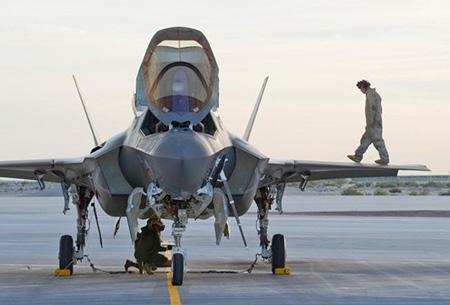"It is undeniable. We have had a myriad of problems and some of us have it even now, but in the end the F-35 will guarantee supremacy on enemy planes. The biggest lesson I learned about the F-35 is that we will never ever put an aircraft in the design phase into production ".
James, perhaps for the first time, has practically affirmed the failure of planning under the "concurrency" regime in peacetime.
What is "concurrency"?
Even today the production of the F-35 is at a reduced pace because part of the project is in progress. This technique is known in the United States as "concurrency", that is reduced production of the aircraft that represent the test bench for the future serial construction. In this way development times should be reduced, but the costs remain considerable.
The "concurrency" was already used since the Second World War in the United States and its costs were so "accepted" by a country at war, always looking for new weapons to be deployed against the enemy.
.jpg) James explains.
James explains.
"People considered the F-35 as the best and cheapest solution, the best hunting on the planet for who knows how many years against a competitor unable to break it. This did not work as we hoped, maybe we underestimated the process of developing a fifth generation hunt ".
The position of the most powerful aviation secretary in the world, different from those triumphalistic or excessively pessimistic of those who first branded the F-35 as a miracle and then label it as a bin, is really lucid and realistic. The truth is in the middle.
"The F-35 cost us a lot and will require considerable sums, more than we imagined. Our goal is to reduce production costs that will affect the final price of the standard fighter. "
You don't have to be a seer to understand that the 35 F-2015 equipped with the Block-2B management software, will have features and capacities clearly inferior to the 2040 with the 7 Block.
"There are many challenges ahead and the problem is one: 24 million lines of code to write."
Just to make a comparison: the F-22 Raptor has 2 millions of lines of source code.
Even on the episode of simulated combat between an F-35A and an F-16 (before Lockheed sent the official announcement, we told what had happened and why that "massacre"), James expressed his point of view, stated that despite flying in there was a deliberately depleted version of the JSF, the latter did not behave well.
"We got important data from that dogfight, when it becomes fully operational, the F-35 will be different from what it now skies. The F-35, will have the ability to see an enemy hundreds of miles away. We will target them and they will not even know what they are attacking. "
Within a few hours, the F-35B should come into service with the Marine Corps. Only one signature is expected.
Franco Iacch
(photo: Lockheed Martin / US Air Force)












